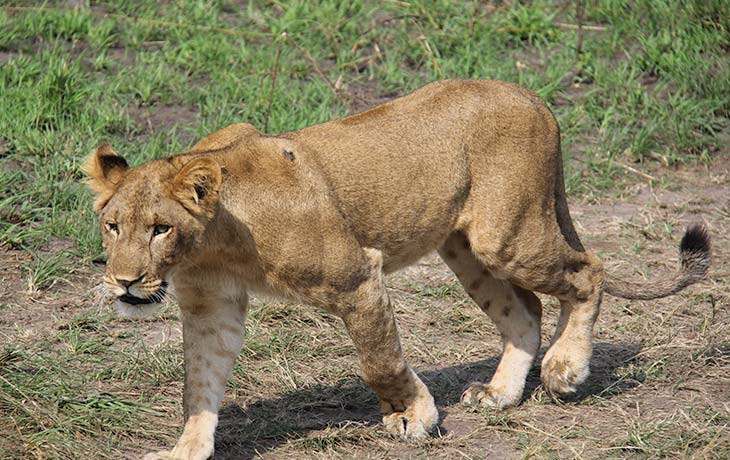The Akagera National Park (French: Parc National de l’Akagera) covers 1,200 km² in eastern Rwanda, against the Tanzanian border. It was founded in 1934 to protect animals and vegetation in three eco-regions: savannah, mountain and swamp.
The park was named after the Kagera River which flows along its eastern boundary feeding into several lakes the largest of which is Lake Ihema. The complex system of lakes and linking papyrus swamps makes up over 1/3 of the park and is the largest protected wetland in central Africa.

Much of the savannah area of the park was settled in the late 1990s by former refugees returning after the end of the Rwandan Civil War. Due to land shortages, in 1997 the western boundary was re-gazetted and much of the land was allocated as farms to returning refugees. The park was reduced in size from over 2,500 km² to its current size.
Although much of the best savannah grazing land is now outside the park boundaries, what remains of Akagera is some of the most diverse and scenic landscapes in Africa. In 2009 the Rwanda Development Board (RDB) and the African Parks Network entered into a 20-year renewable agreement for the joint management of Akagera.
The Akagera Management Company was formed in 2010 as the joint management body for Akagera National Park. Over the next 5 years, a US $10 million expenditure is planned for Akagera including the construction of a 120 km western boundary fence and the reintroduction of lion and black rhino.
Akagera is, above all, a big game country! Herds of elephant and buffalo emerge from the woodland to drink at the lakes, while lucky visitors might stumble across a leopard, a spotted hyena or even a stray lion. Giraffe and zebra haunt the Savannah, and more than a dozen types of antelope inhabit the park, most commonly the handsome chestnut-coated impala, but also the diminutive oribi and secretive bushbuck, as well as the ungainly tsessebe and the world’s largest antelope, the statuesque Cape eland.
Camping alongside the picturesque lakes of Akagera is a truly mystical introduction to the wonders of the African bush. Pods of 50 hippopotamus grunt and splutter throughout the day, while outsized crocodiles soak up the sun with their vast jaws menacingly agape.
Magically, the air is torn apart by the unforgettable high duetting of a pair of fish eagles, asserting their status as the avian monarchs of Africa’s waterways. Lining the lakes are some of the continent’s densest concentrations of water birds, while the connecting marshes are the haunt of the endangered and exquisite papyrus gynolek, and the bizarre shoe bill stork – the latter perhaps the most eagerly sought of all African birds.
Species in Akagera National Park
There are several faunas, floras and birds which include elephants, buffaloes, lions, Masai giraffe, gazelles, impala, baboons, oribi, Butchel’s zebra, topi, bush baby, leopard and bushbuck. Aquatics include crocodiles and hippos. Akagera National Park features a large concentration of bird life with over 525 species identified. Unique species such as shoebill and papyrus gynolek can be encountered. Endemics include the African jacanas, Hadada ibis, sandpipers and herons.
Activities in Akagera National Park
These include:
- Camping
- Picnics
- Nature walks
- Bird watching
- Boat rides
- Game drives
Accessibility to Akagera
The park can be accessed through two gates the Kabarando and Kiyonza. Or it can be accessed by private/domestic charter flights.
Accommodation
The park has limited accommodation facilities like:
- Akagera Game Lodge
- Campsites

